Inside the Franklin Institute’s Stunning New “Body Worlds” Exhibit
The exhibit features 150 real human specimens — including 20 whole-body plastinates — to explore the human condition.
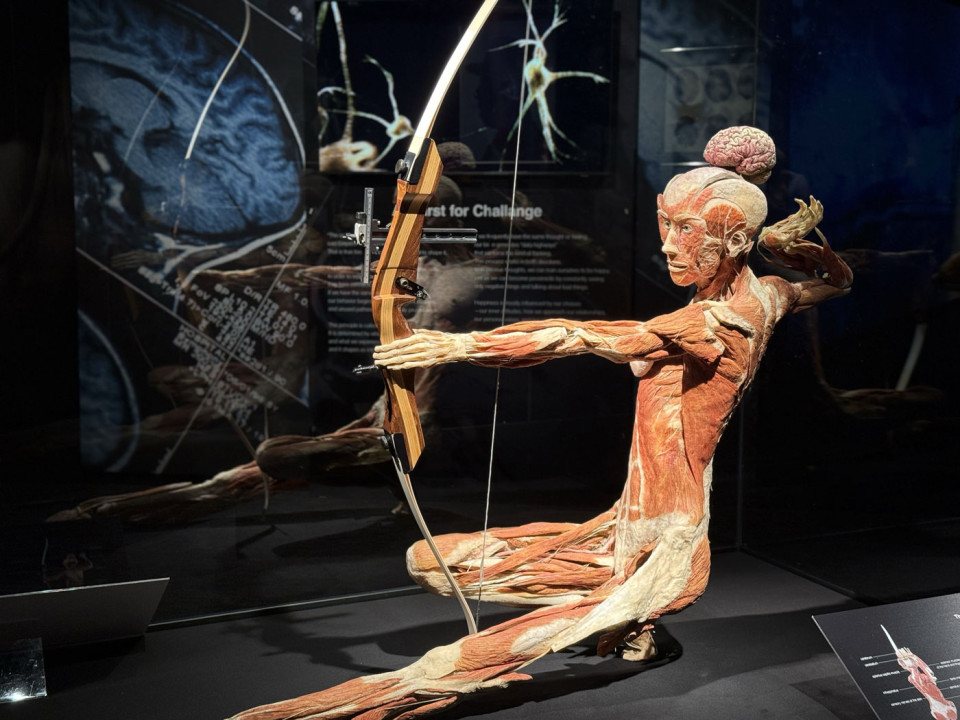
The Franklin Institute’s new “Body Worlds: Vital” exhibit features 150 real human specimens — including 20 whole-body plastinates — to explore the human condition. / Photography by Laura Swartz
Back in 2005, the Franklin Institute broke records — and possibly some taboos — with its first iteration of the “Body Worlds” exhibit.
The exhibit, featuring real human specimens —including whole-body plastinates, sometimes in whimsical positions like skateboarding or playing guitar — drew over 600,000 visitors to the Franklin Institute 20 years ago. Since its debut, it’s drawn in more than 56 million people around the world. It was not without controversy, from the sourcing of the bodies to the idea of posing and displaying them. But it’s clearly been a blockbuster exhibit, visiting the Franklin Institute in different iterations two more times after its East Coast debut.
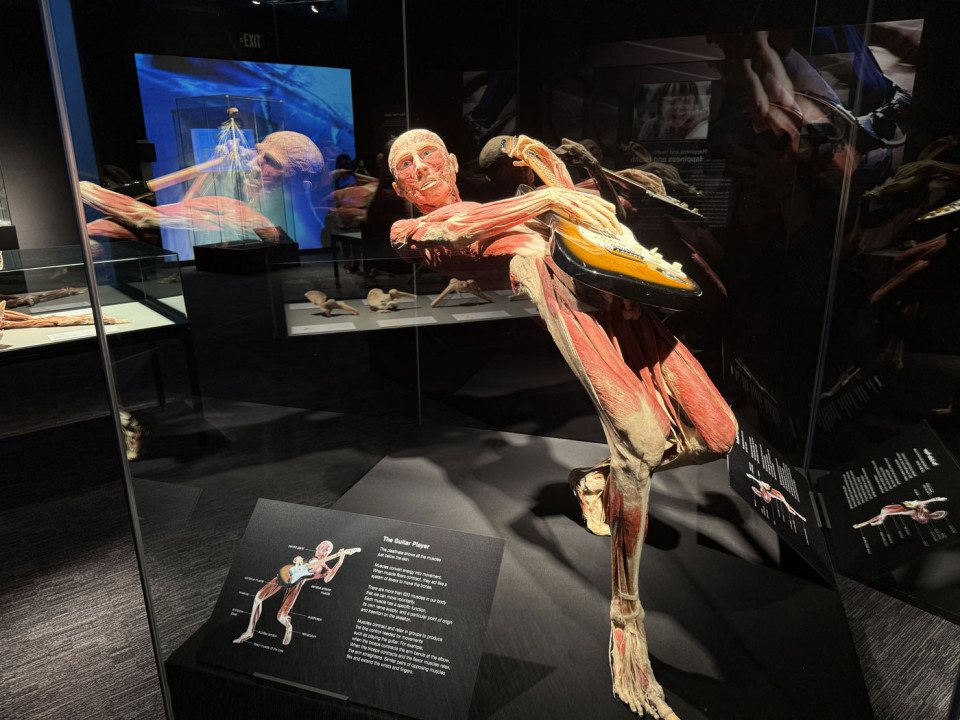
“‘Body Worlds’ has proven to be one of the most popular and impactful exhibitions in the Franklin Institute’s history, delivering massive and enduring appeal,” says Larry Dubinski, president and CEO of the Franklin Institute.
So now it’s back at the Franklin Institute as “Body Worlds: Vital.” This current iteration spans 16,000 square feet and features more than 150 human specimens. And the exhibit doesn’t just show you anatomy; it tells the story of how our choices impact our longevity, strength, and overall well-being. Here’s what to expect at the Franklin Institute’s “Body World” exhibit.
About “Body Worlds”
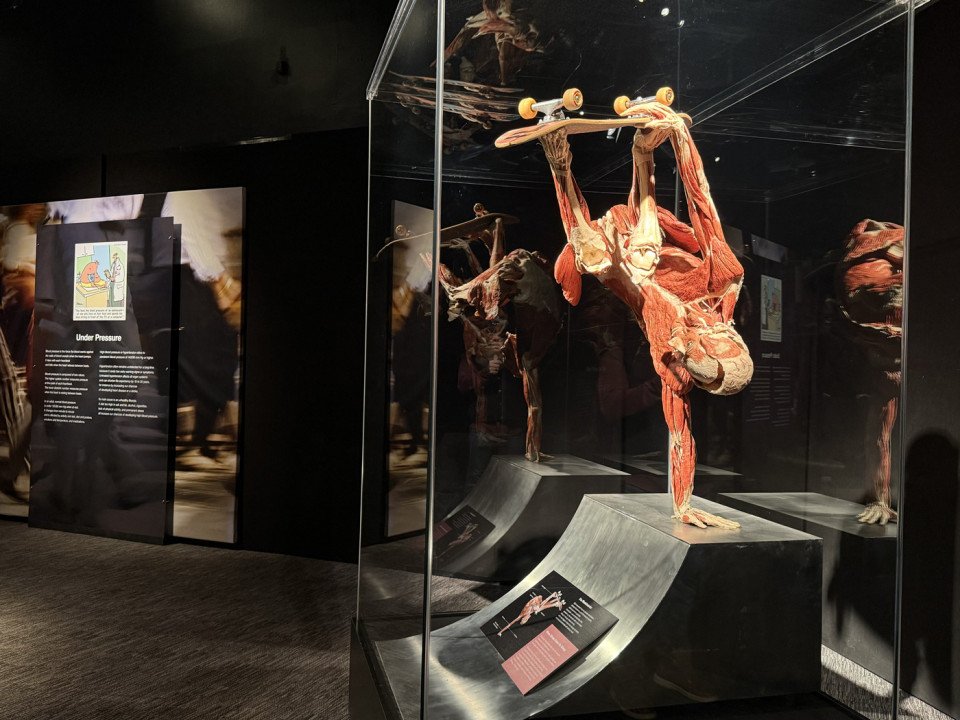
The exhibit features real human specimens made into plastinates … But what are plastinates?
Plastination is a process invented by Gunther Von Hagens — the “Body Worlds” exhibits all bear his name — in 1977. You can read all about the process in great detail here, but basically the bodies are preserved by replacing fat and water with plastic. Once the body is “impregnated” with plastic, it can be posed using wires, foam blocks, clamps, and more. The plastic then hardens, making the body dry, odorless, and long-lasting. Each one takes about a year to complete.
The bodies themselves are donated, so the people are fully aware that their bodies may be positioned into an archer, a musician, a dancer … any kind of pulled-apart mixed-media sculpture, really, after they die. Their identities and causes of death are not disclosed.
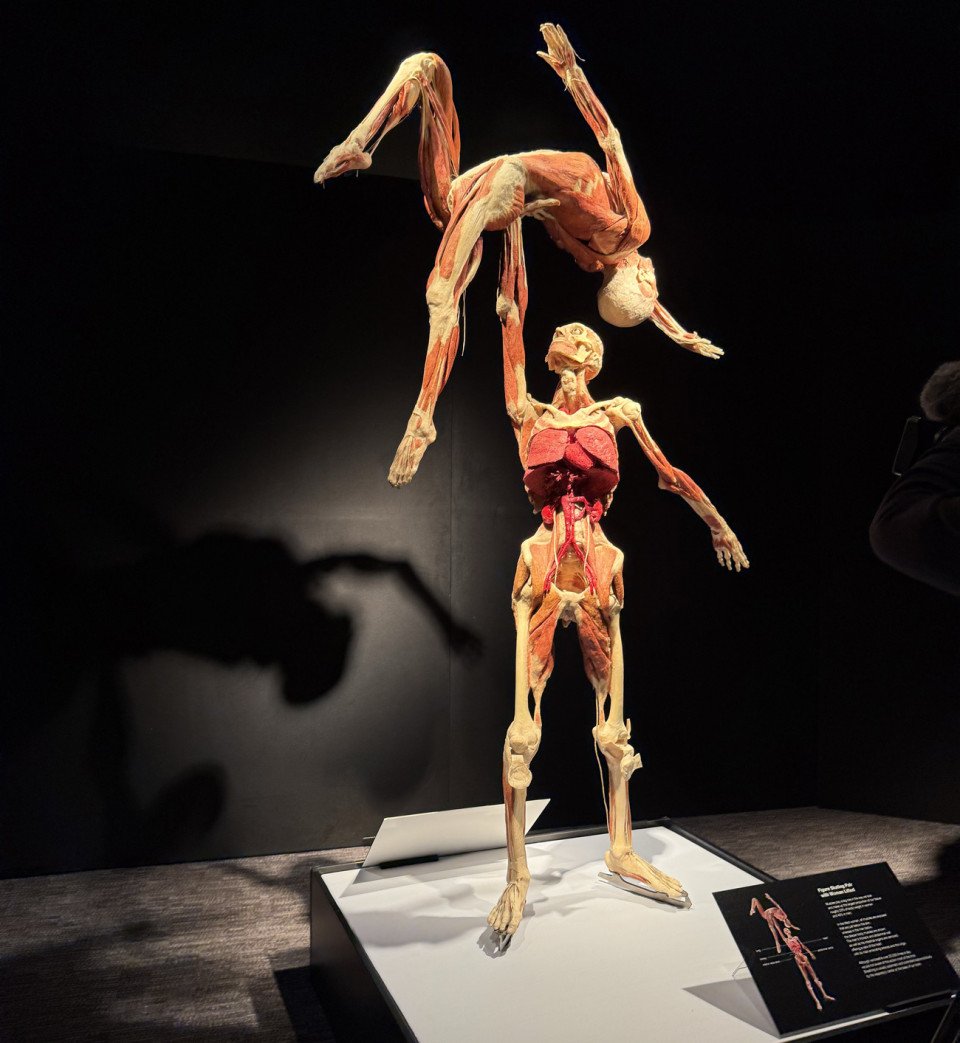
The full-size plastinates range from the serious to the whimsical to the grotesque. Additionally, visitors can expect an up-close look at artificial knee and hip joints, a side-by-side comparison of healthy and diseased lungs, and a deep dive into the resilience — and vulnerability — of the human body. Think of it as a powerful, sometimes shocking, always fascinating reminder of what’s happening beneath your skin every second of every day.
There’s also an underlying reminder of our mortality — a feature that, honestly, could either uplift you or bum you out. When I was talking to Dubinski at the preview, he characterized it as darker; I countered that it tries to get you to live life while you still can. For example, at one point, the exhibit prompts visitors to write something they want to do before they die on a giant chalkboard.
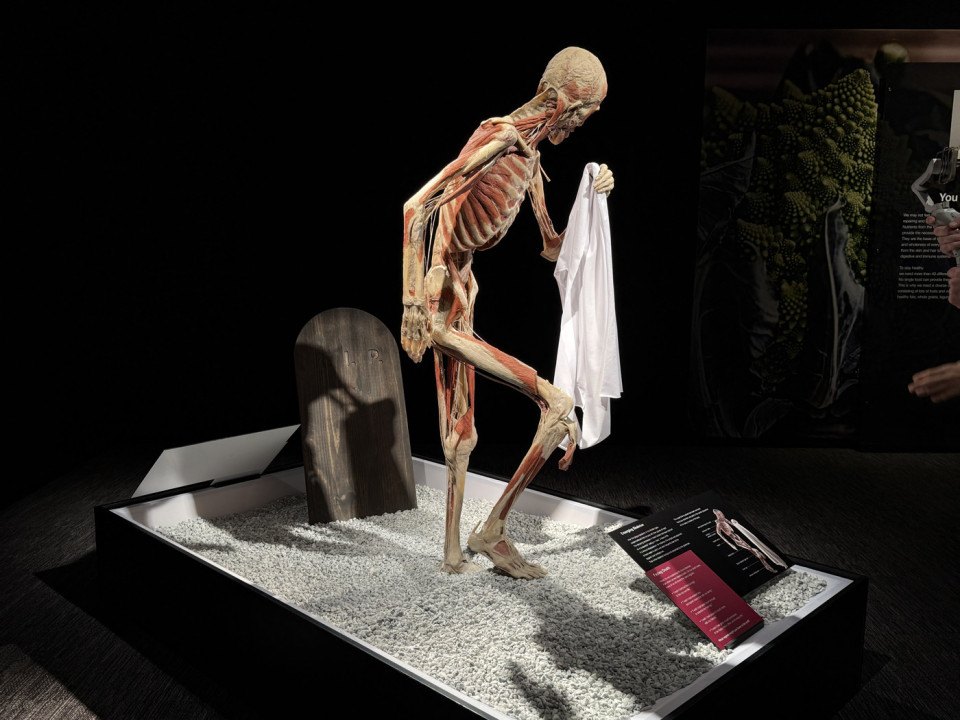
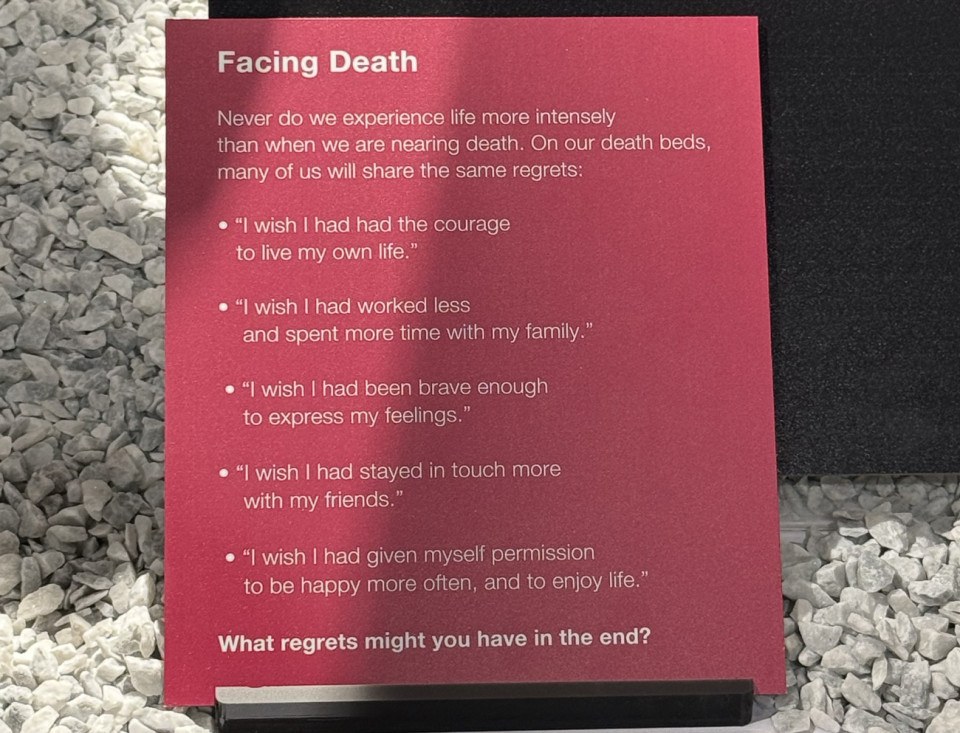
After all, these plastinates are having adventures — playing sports, dancing, traveling the world — and the idea that they’re having a more exciting “life” than their prior inhabitants seems as much a cautionary tale as the specimens of smokers’ blackened lungs and blocked arteries.
Umm … Should I Bring the Kids?
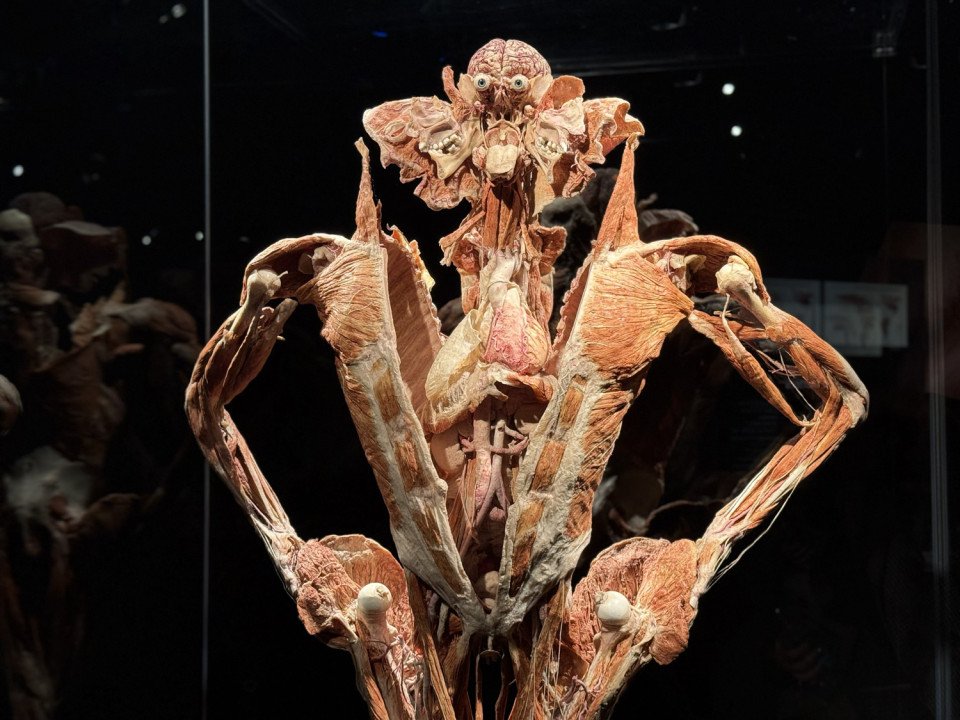
Not all of them! And probably not younger than school-age. But you know your kids best.
As with all potentially scary things, telling your kids what to expect will maximize your chances that their visit inspires knowledge rather than nightmares. Fortunately, the “Body Worlds” site has educational and family guides to help give kids background info and preparation for what they’ll see.
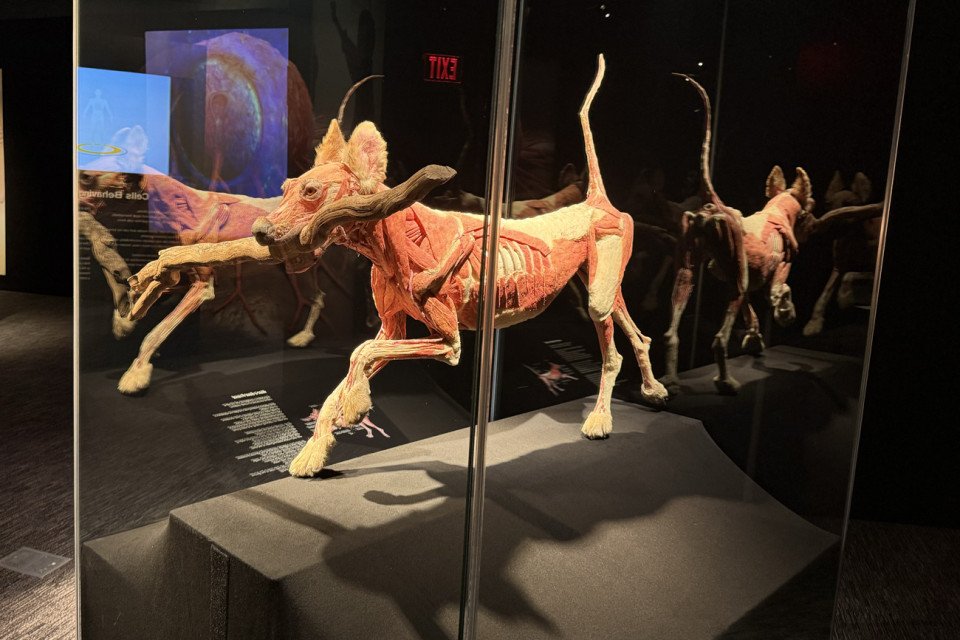
Who was a good boy?
As far as the Franklin Institute’s special exhibits go, this one isn’t as hands-on as, say the Disney or Lego ones, so if your kids get bored without something to do at museums, that’s also good to keep in mind.
“The Year of the Body”
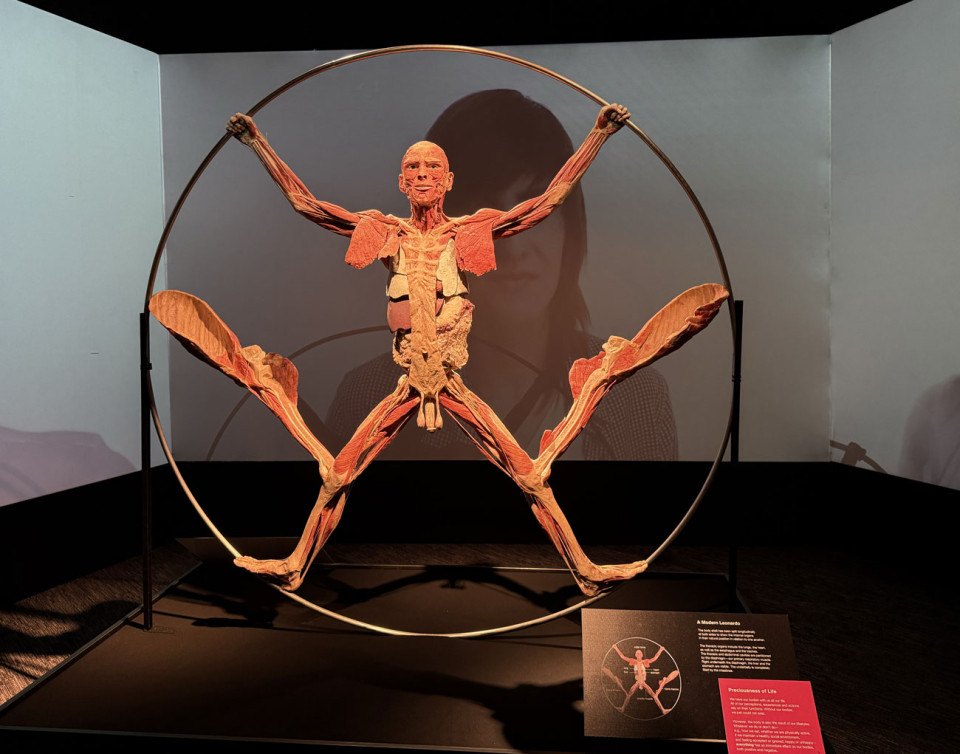
For those who want to go even deeper, “Body Worlds: Vital” pairs seamlessly with the Franklin Institute’s new “Body Odyssey” permanent exhibit, which includes the renovated Giant Heart and lots of interactives and displays exploring human biology and health.
“It’s the Year of the Body here at the Franklin Institute,” Dubinski said at the “Body Worlds” media preview. To support the special exhibit upstairs, “Body Odyssey” will have extra experiences, like the daily opportunity to observe a “mystery dissection.”
Together, “Body Worlds” and “Body Odyssey” offer a compelling look at what keeps us going — and what holds us back.
Know Before You Go
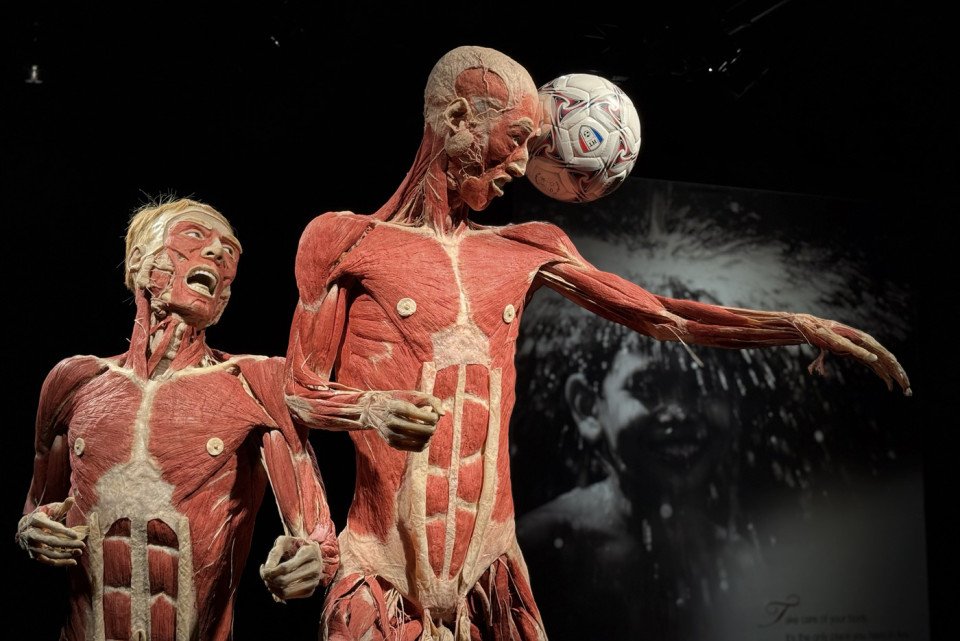
“Body Worlds: Vital” runs at the Franklin Institute (222 North 20th Street) through September 1st. Timed tickets are available online and are $41-$43 for kids and $47 for adults (with discounts for museum members). If you’re looking to save some money, there are also evening tickets for $20, which include admission to the exhibit only, from 5 p.m. to close on Thursdays through Saturdays.


